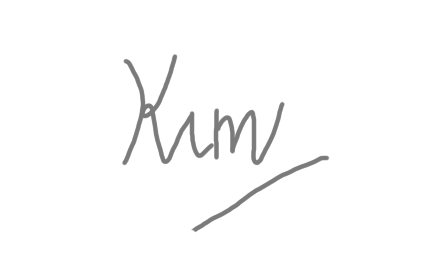You have come across some weird bullet journal terms – what do they mean? This is the article that will guide you through.
Table of Contents
Table of Contents
Bullet Journal Terms – Intro
I remember it myself – typing the search ‘what is a bujo vs bullet journal?’
Let me help you with this answer first:
A bujo is a shortened version of bullet journal. Take the ‘bu’ from bullet, and the ‘jo’ from journal. What does it become? – BuJo! They are the same thing.
But of course, there are so many more questions. What is ……..? There are so many words to learn with bullet journaling.
So I have created a useful guide for bullet journal newbies to learn all this bullet journal terminology.
Let’s dive in!
Bullet Journal Method
The bullet journal method is the original method of using a bullet journal for life organization. It was invented by Ryder Carroll – a legend in the bullet journal community.
It is described as a toolkit for creating order and intention in life. It includes journaling, planning and note-taking.
Spread or Layout
A spread is the term used to describe a bullet journal page’s function. For example you can say: ‘This is my calendar spread’. This means I will show the calendar page or pages I have made. You can also use this in general to say – I have only made 2 spreads for my bullet journal this month.
Layout more specifically refers to the design of the function. For example, you can say that for a calendar spread you could use a vertical layout or a horizontal layout. It refers to two different designs for the calendar function.

Migration
This term has two meanings.
The first refers to re-creating content from one bullet journal to another.
This often happens because for example if you make some pages for yearly planning at the start of your bujo but you fill up your bujo in 6 months, then you need to migrate the yearly planning pages to your next bujo so you have them for the second half of the year.
The second is referring to migrating tasks. So if you have not completed a task on the day you planned to, you will indicate with a symbol that you are going to migrate the task, which means you are going to move it forward to a future day.
Collection
A bullet journal collection means a group of pages in a bullet journal that are all linked by topic.
For example a self-care collection might include pages that track exercise, or might include a page of ideas for a self-care day. There could also be medication information in there and some recipes for making healthy snacks.
You get the idea, a group of pages that match topic.
READ: Get Organized and Inspired: How to Start a Collection in Your Bullet Journal
Dutch door
A Dutch door in bullet journal terms is where a section of page is cut off to reveal the page behind it.
Some people have monthly to do lists and the cut some pages to create smaller weekly pages where the monthly to do list is visible whatever week you are in.
It’s such a genius clever hack for your bullet journal – a definite recommend.
Theme
A theme is often referring to decoration not to the function of the bullet journal.
Many people choose a decoration that they use for every one of the monthly spreads, for example for January they might use snowflakes. For every page of January they will decorate it with the same style of snowflakes, that means for January they are using a snowflake theme.
Bullet Journal Glossary of Pages
Cover page
A cover page is another word for a title page.
It is like an introduction to a collection. So for example many will do a monthly collection of planning pages, including a calendar and trackers etc. They may create a very arty beginning page with the title of the month. This is the cover page for that month.
Log
A log spread is one where you have the days numbered down the left hand side of the page and then you ‘log’ meaning write in your desired thing for each day.
For example some use a ‘Gratitude Log’, they write in what they were grateful for for that day.

Future log
Future logs are a specific spread to show future dates, so that you can log future events.
Many create a yearly future log with all 12 months and some space to fill in events for the year.
Key and Index
These are pages that go right at the beginning of your journal.
The index is basically a table of contents for your bullet journal. This is helpful especially for those who want to use the original bullet journal method, which includes having an index to keep track of what is on each of your pages.
A key is a list of symbols that will have meaning in your bullet journal. These symbols are called signifiers, so a key is a list of signifiers.
For example you may want to have one symbol for marking a task as complete, or another for if you want to migrate a task to a future day.
Glossary of Technique Terms
Bleeding and Ghosting
This is bullet journal terminology used when ink from a pen, or marker can be seen on the other side of the page.
Bleeding specifically is when the ink has come through the page and so ink is visible on the back of the paper.
Ghosting refers to there being a shadow of the ink on the back of the paper, but it hasn’t completely come through the page.
Grid spaces
Some might be demonstrating how they created their layout. They might say this box is 5 X 5 grid spaces.
This means that using the dot grid squares as imaginary boxes, there is 5 across and 5 down.
Read: From Black Page to Planner: How to Make a Bullet Journal
Drop shadow
This can be used on lettering or on the boxes in a layout.
It means adding an extra line of highlighter or marker, a thickish line, right next to the original pen marking. Usually people add this extra line under the bottom horizontal sections and to either the left vertical or right vertical, but not both.
It gives the effect of the box or lettering standing up off the page.
Conclusion
That is all the bullet journal terms I can think of off the top of my head.
Did you learn any new terms in this bullet journal glossary?
Did I miss any? Please do let me know in the comments if there is a confusing term that you want to have an explanation for. I am sure I must have missed some.
For now, thanks so much for being here, happy bullet journaling!!
READ: Getting Started: How to Design Your Unique Bullet Journal First Pages

YOU MIGHT ALSO LIKE…





Great article, exactly what I was looking for.